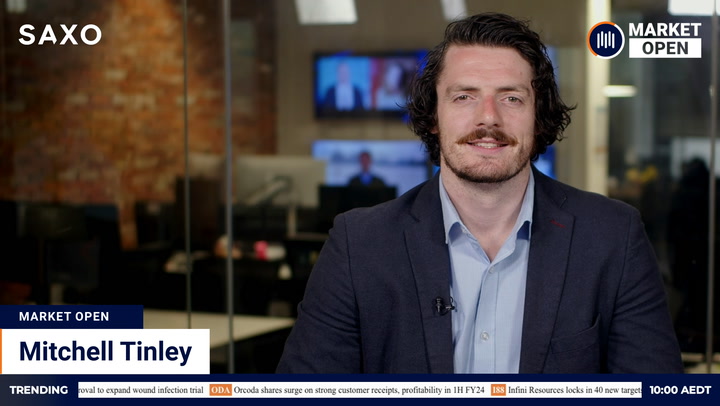A dramatic escalation in the coronavirus crisis and a bleak end to Wall Street’s worst week since 2008 point to a negative start to Australian share trade.
Index futures indicate an opening loss of 87 points or 1.8 per cent after US stocks fell heavily on Friday. However, those figures have been overtaken by weekend events after the federal government announced swathes of the economy will shut down indefinitely from today to slow the spread of the Covid-19 virus.
The National Cabinet last night announced indoor venues, including pubs, clubs, cinemas, casinos, gyms and churches, will close at midday today. Restaurants and cafes will be limited to offering takeaway food. Prime Minister Scott Morrison warned the closures could continue for six months, bringing huge parts of the economy to a standstill. Several state governments announced more comprehensive measures earlier in the day, including closing their borders. The new measures came as the number of infections in Australia continued to multiply by a fifth to a quarter each day, suggesting up to two million people here could have the virus by the end of next month.
The announcements add to headwinds for the local market following its heaviest weekly loss since the global financial crisis. The ASX 200 tumbled 13 per cent last week despite a 34-point or 0.7 per cent rally on Friday. The weekly deficit was the second worst in the index’s 20-year history and came amid predictions the economy faces its worst contraction since the Great Depression.
US stocks plummeted on Friday as “stay-home” orders in New York and California triggered another round of selling. The S&P 500 shed 104 points or 4.34 per cent, extending its loss for the week beyond 13 per cent and bringing its decline from last month’s peak to 32.1 per cent.
The Dow Jones Industrial Average was ahead more than 400 points mid-morning, but faded to a final loss of 913 points or 4.55 per cent. The blue-chip gauge lost 17 per cent last week, fractionally less than an 18.2 per cent loss in October 2008. The Nasdaq fell 271 points or 3.79 per cent on Friday for a weekly deficit of 12.6 per cent.
Selling accelerated in the afternoon following reports that a clearing firm at the Chicago Mercantile Exchange (CME) was unable to meet its capital requirements, forcing the exchange to step in under an emergency protocol. The incident sharpened fears about the financial toll the crisis is taking on companies.
“Markets are trading more on emotion than the actual data,” Sal Bruno, chief investment officer at IndexIQ, told CNBC. “When we look back at this, we’ll see how much of this was information-based trading and how much was emotionally based trading.”
In a topsy-turvy end to the week, defensive sectors were slammed, while energy stocks rose despite another steep downleg in oil. The three worst sectors on Friday were utilities -8.2 per cent, consumer staples -6.5 per cent and real estate – 5.5 per cent.
The energy sector bounced 1 per cent at the end of oil’s grimmest week since 1991. Brent crude settled $1.49 or 5.2 per cent lower at US$26.98 a barrel, a level last seen in 2003. The US benchmark fared even worse, finishing $2.79 or 11.1 per cent weaker at US$22.43. West Texas Intermediate shed 29 per cent last week despite posting its biggest one-day rise on record on Thursday.
Cracks finally appeared in iron ore markets after weeks of stern resistance to the economic storm buffeting commodity markets. The spot price for ore landed in China dropped $3.95 or 4.4 per cent to US$86.55 a dry ton. The overseas reaction by the big Australian miners was mixed. BHP’s US-listed stock dropped 2.72 per cent after its UK-listed stock gained 3.18 per cent. Rio Tinto shed 3.66 per cent in the US after rising 1.25 per cent in the UK.
Copper ended its worst week since 2011 with another loss after an early bounce faded. Benchmark copper on the London Metal Exchange eased 0.3 per cent to US$4,805 a tonne. Aluminium fell 3 per cent and nickel 0.2 per cent. Lead bounced 2 per cent, zinc 0.4 per cent and tin 0.5 per cent.
Gold trimmed a second week of losses. Gold for April delivery settled $5.30 or 0.4 per cent ahead at US$1,484.60 an ounce. The precious metal gave up 2.1 per cent last week as even havens were liquidated in a flight to cash.
The dollar eased 0.14 per cent this morning to 57.9 US cents.
The new trading week in the US looks set to start without a stimulus bill. Divisions remained ahead of tonight’s deadline. The Wall Street Journal reported House Democrats were working on their own legislation as Senate Republicans pressed ahead with their US$1.3 trillion stimulus plan.







